Bacton gas terminal: Keeping the UK warm since 1968
- Published

The Bacton terminal was built to process gas from the North Sea
A seaside complex that handles a third of the UK's gas supply is marking its 50th anniversary.
North Sea gas first started to arrive ashore at the Bacton terminal on the Norfolk coast in July 1968.
It is one of National Grid's eight gas terminals, helping to distribute supplies across the country, and can also import or export gas from Europe.
The company said the site, 20 miles (32km) from Great Yarmouth, is of "strategic national importance".
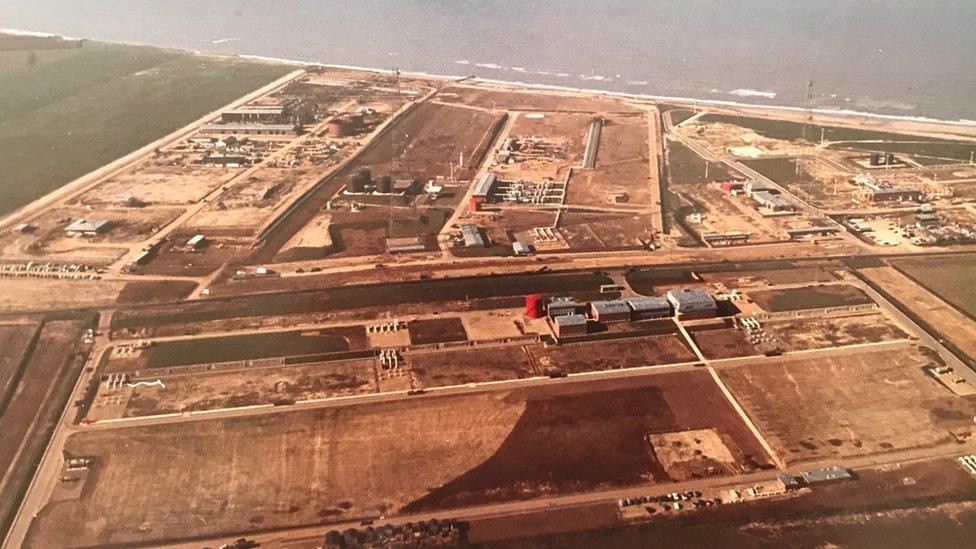
The terminal is situated on the north Norfolk coast, about 20 miles (32km) from Great Yarmouth
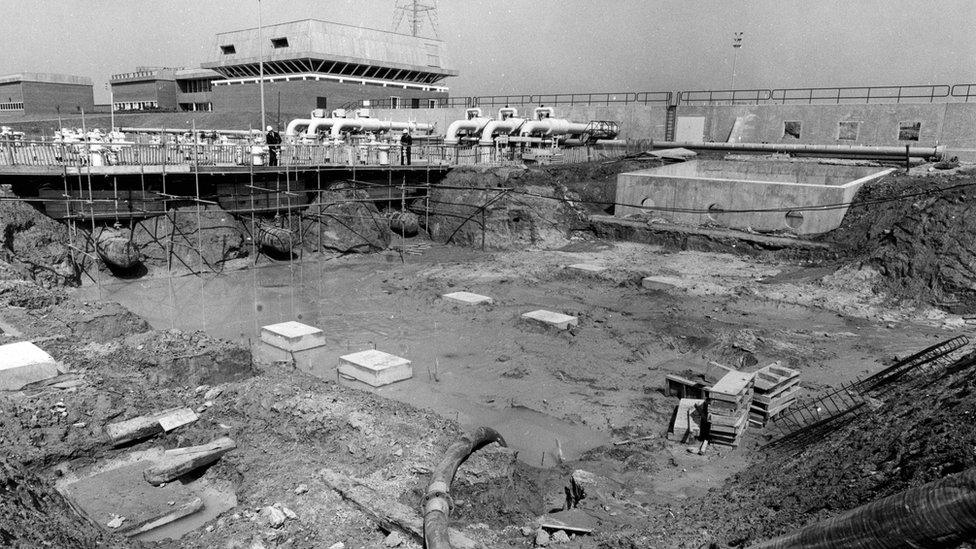
It was constructed during 1967 and 1968
The terminal took about a year to build and was officially opened by the Duke of Edinburgh in 1969.
At the time, homes and businesses were being converted to natural gas - a process that would take until 1977 to complete.
Domestic cookers and other appliances needed to be converted because "pure" North Sea gas had a higher energy value than manufactured town gas.
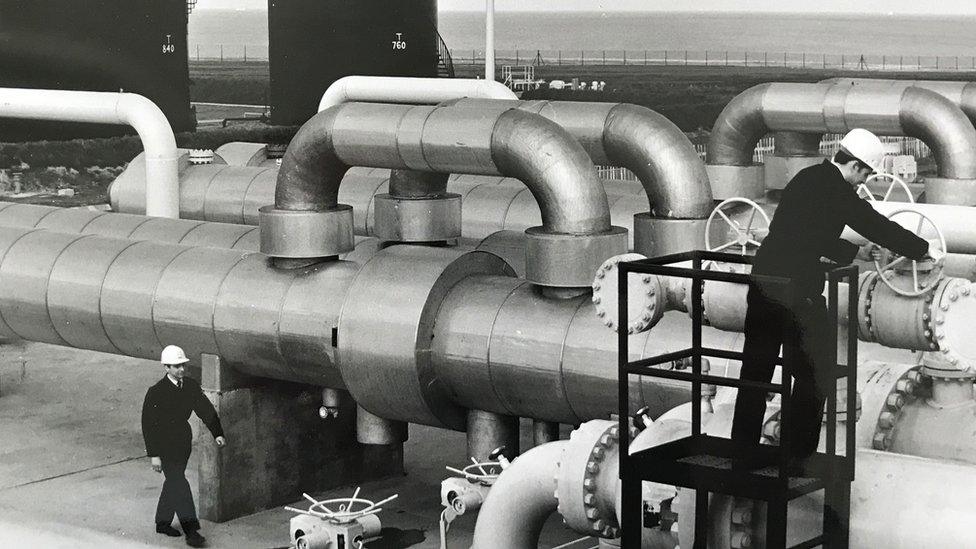
Gas began to arrive at the site from offshore fields in July 1968

The Duke of Edinburgh toured the facility during its official opening in 1969
Phil Sheppard, National Grid's director of gas transmission, said: "This is a landmark month for us. 50 years ago, Bacton opened to start taking the first flows from the North Sea gas fields.
"They were fed into a 36-inch diameter gas pipeline which ran 140 miles from the coast to Rugby.
"Gas flowing through Bacton has played an important role in keeping homes warm and production lines running over the past 50 years."
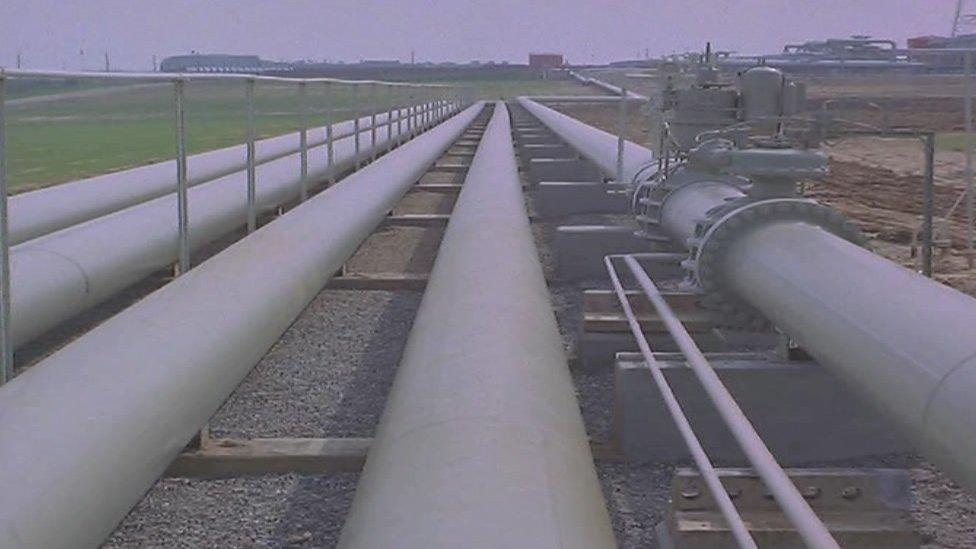
A new gas supply network was built
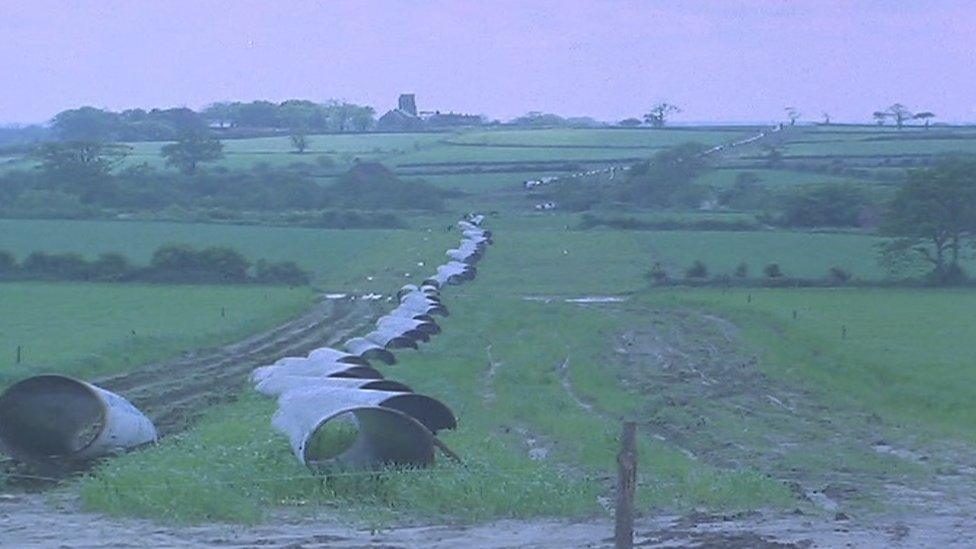
One pipe covered 140 miles to Rugby in the West Midlands
The terminal has grown over the years, covering 180 acres, and is adjoined by terminals operated by Perenco and Shell.
Gas is received from offshore gas fields and supplied to the pipe network, which criss-crosses the UK.
It can also send gas to or receive gas from Zeebrugge in Belgium and receive gas from the Netherlands.
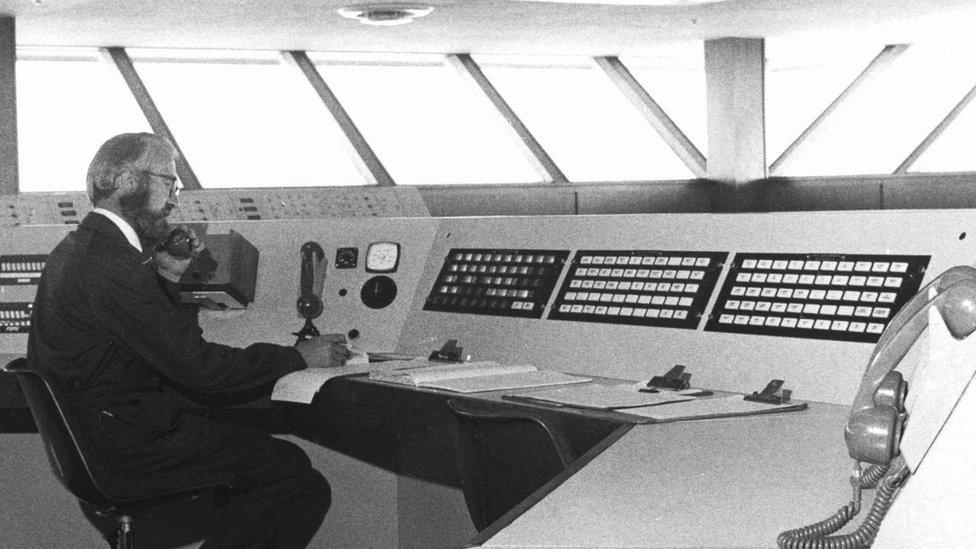
National Grid described the site as being of "strategic national importance"
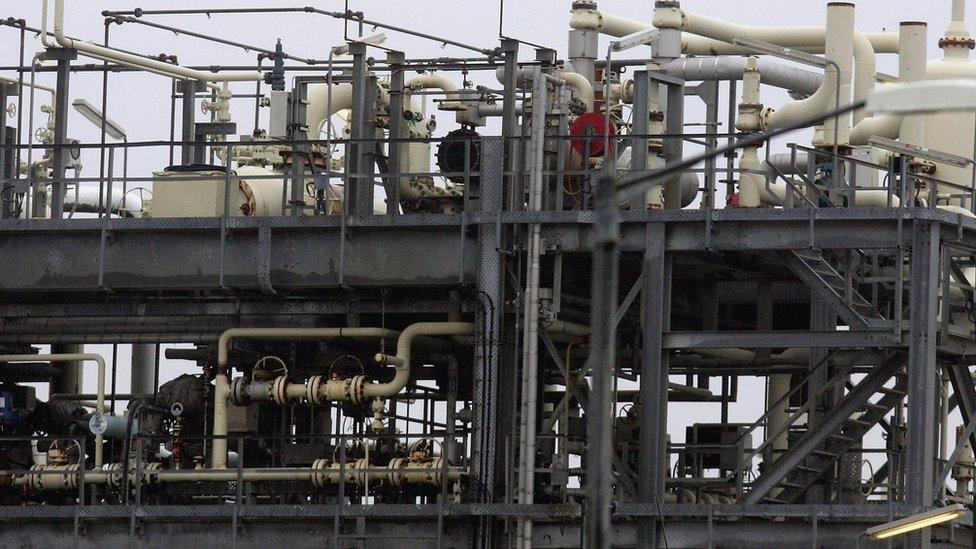
Bacton can also import and export gas to the continent
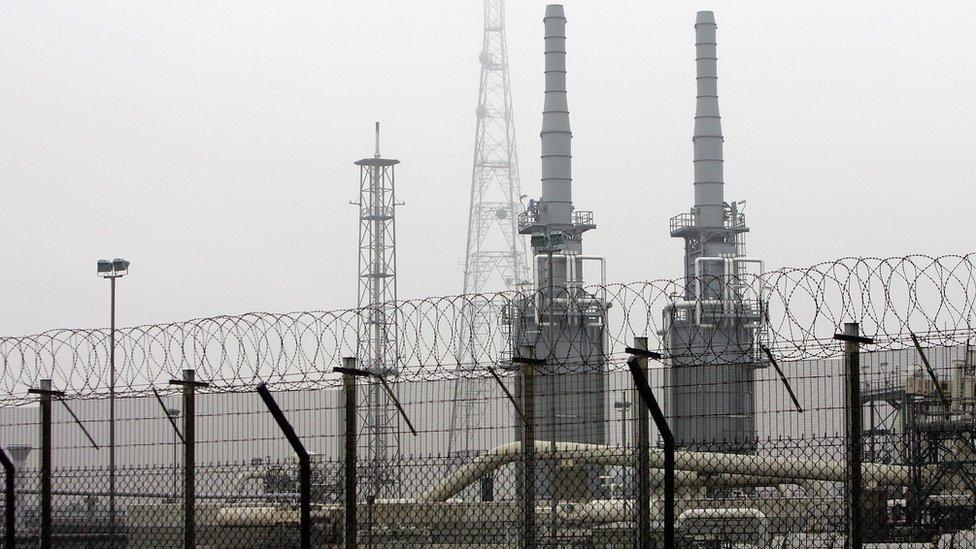
The site now handles about a third of the gas needed by the UK